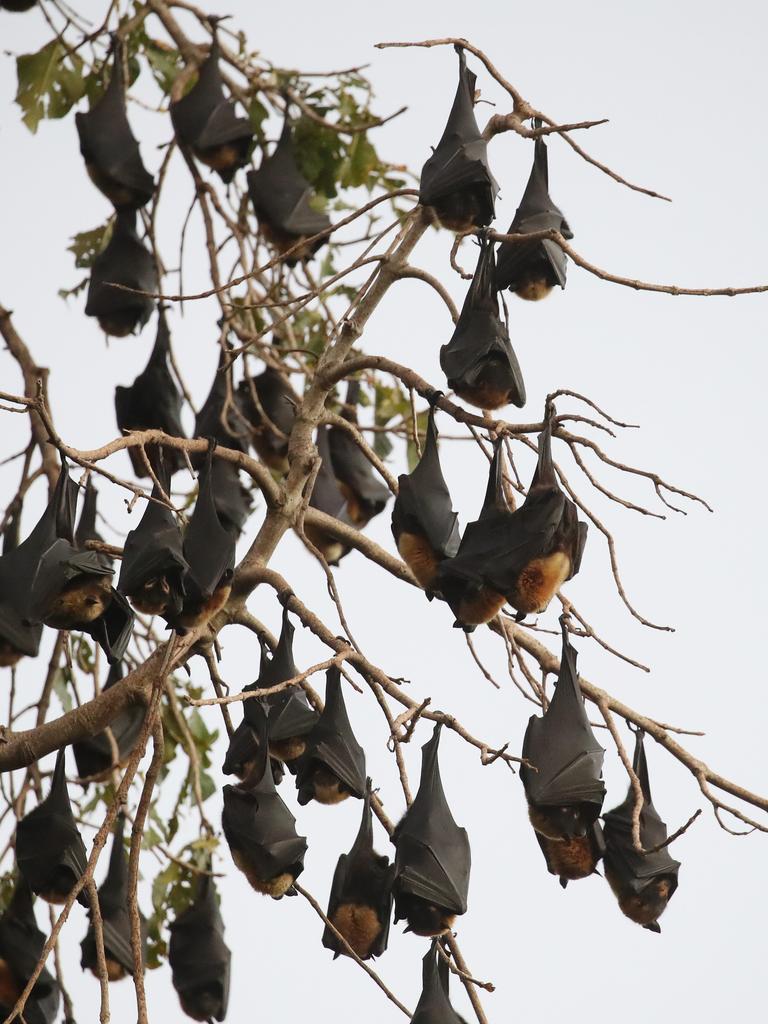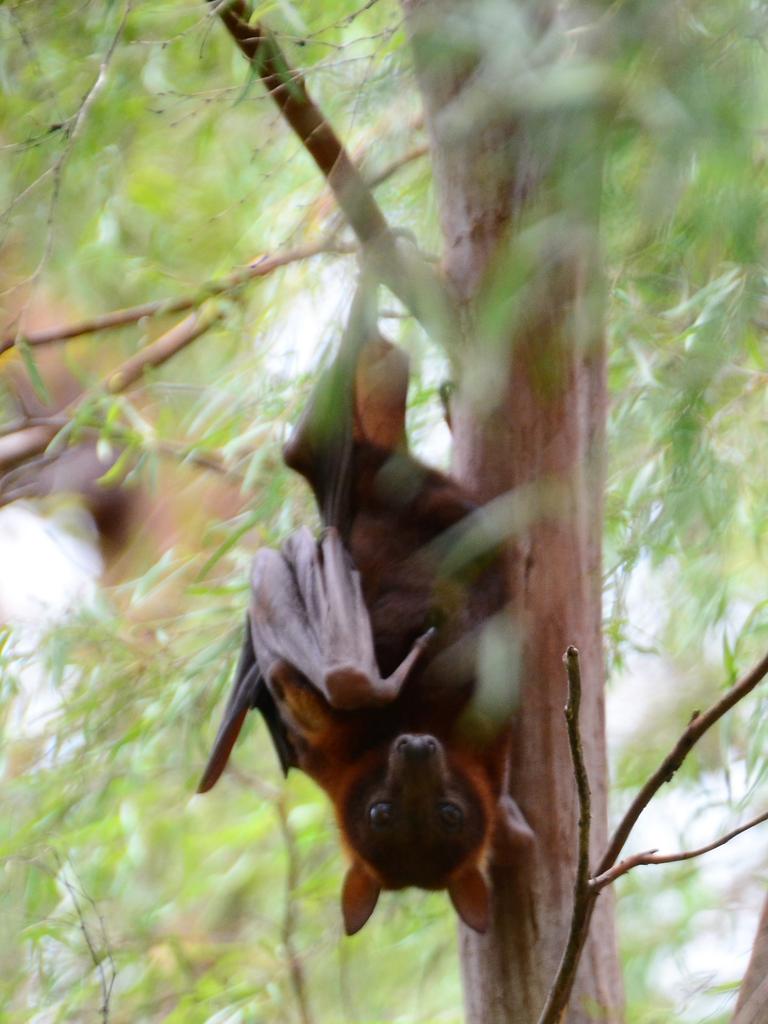Why Gympie’s flying fox invasion has become a mass exodus
An investigation into an estimated 320,000 flying foxes which moved in to the heart of the city has now revealed an extraordinary exodus

Gympie
Don't miss out on the headlines from Gympie. Followed categories will be added to My News.
A DETAILED investigation into the increasing number of flying foxes at the colony in the heart of Gympie at Commissioners Gully has revealed something extraordinary: the flying foxes are now leaving in their hundreds of thousands.
CLICK HERE: Gympie residents under siege from flying foxes
Gympie Regional Council employees doorknocked about 70 homes impacted by the roosting bats when the situation become intolerable for some home owners. The council has since set up a data base and instigated a regular communication with affected residents, who have indicated the number of bats roosting in Commerissioners Gully has gone from 320,000 to 5000 or even 2000.
GYMPIE COURT: 26yo locked up for terrifying strangulation and abuse
And the mysterious cause of , first, the sudden increase in numbers and, now the slow easing of numbers? Baby flying foxes.
The trees around Commissioners Gully had become a flying fox nursery.

Up to eight colonies from the Gympie region and Sunshine Coast are believed to have chosed to have their “pups” there.
Councillor Bruce Devereaux said today the flying floxes started “pupping” about a month ago, and the last of the pups was not expected to be 10 weeks old until late February.
Department of Environment and Science officers visited the site to conduct a flying fox count last week. They counted less than 5000 flying foxes; a significantly lower number than the estimated 320,000 that were thought to be at the site in September.
But Mr Devereaux said some counts had put the number now as low as 2000.
It is believed the flying foxes are moving to more suitable sites, as another known colony at Ginger Creek in the region has grown in recent weeks, and some of its inhabitants had been at Commissioners Gully.
Ginger Creek is an historic Gympie region flying fox colony and not near any residential properties.
The council now plans to engage a flying fox specialist to study Commissioners Gully and devise a humane way to discourage the huge numbers from returning.
The specialist will:
1. Do on-site monitoring of Commissioners Gully
2. Develop a long-term Commissioners Gully Flying Fox Management Plan giving direction to council staff on how the council can manage the vegetation and other factors at Commissioners Gully to discourage the return of flying foxes to this roost site.
3. Develop a Habitat Improvement Plan for Widgee Crossing
Widgee Crossing is another historical roost site that is a great spot for flying foxes because it’s away from residential housing.
Improving the Widgee Crossing roost site by doing things like removing weeds and helping establish flying fox friendly trees and hanging structures will help draw flying fox colonies out of Gympie’s urban areas.
Meanwhile, local residents have again been warned to not touch the flying foxes, even if they find a sick injured, dead or orphaned one.

Advice from the Queensland Government’s Department of Environment and Science is:
· If you find a sick, injured or orphaned flying-fox, do not touch it. Contact your local wildlife care organisation (Our local wildlife care organisation is ANARRA 5484 9111) or the RSPCA Qld. They will put you in contact with a licensed and fully-vaccinated wildlife rescuer who is trained to handle and care for wildlife.*
· If the flying fox shows signs of paralysis, or has come into contact with (i.e. bitten or scratched) a dog or a cat, contact the nearest Department of Agriculture and Fisheries (DAF) office or call 13 25 23 as they may wish to inspect the flying fox. If the flying fox has come into contact with (i.e. bitten or scratched) a person, contact the nearest public health unit or a doctor immediately.*
* Do not dispose of the flying fox. In both these situations, the flying fox will need to be tested so that definite information is obtained as to whether the flying fox was infected or not. This information is vital to how the situation is then managed.
To dispose of a dead flying fox that is not needed for testing, use a shovel and/or tongs to remove it and then wrap it and place it in a bin or landfill site, or bury it. Do not touch the bat without wearing thick gloves. If burying it, ensure that the hole is deep enough so that a dog could not dig it up.

Find our more at https://environment.des.qld.gov.au/wildlife/animals/living-with/bats/flying-foxes/viruses
Anyone with concerns or inquiries can contact the council’s dedicated flying fox project team on 5481 0605 or by email flyingfoxes@gympie.qld.gov.au. Alternatively, they can contact their local councillor, Bruce Devereaux, directly on 0436 311 494.







